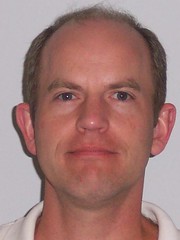3rd PV Industry Forum at the EU PVSEC: Cost, Cost, Cost and Price / Politics
Reflecting on the 21st European Photovoltaic Solar Energy Conference and Exhibition (EU PVSEC) in
The European Photovoltaic Industry Association (EPIA) established the PV Industry Forum as a platform to discuss industry related issues. PV Industry and Political/Strategic view points were presented on key topics such as PV Market Development and Industry Competitiveness. Each theme was chaired by industry leaders, and a moderated debate on the viewpoints with attendee participation was facilitated by Ranga Yogeshwar, WDR,
Dr. Winfried Hoffmann, President of EPIA and general manager of SCHOTT Solar GmbH, reviewed the state of the PV industry and provided the conservative EPIA PV market forecast of 5.5GW by 2010 and another 5-10 years to reach grid price parity in sun rich
On the silicon feedstock front, Dr. Hubert Aulich, CEO of PV Silicon AG, analyzed silicon feedstock availability for photovoltaic and semiconductor industries until 2010 and concluded an additional 35,000 metric tons of silicon feedstock production capacity, beyond all the recent announcements, is required to fuel 35% annual PV market growth.
Cost, Cost, Cost was the mantra of German PV market leaders Q-Cells (FRA:QCE) and Deutsche Solar (a subsidiary of SolarWorld (FRA:SWV) ). Both companies recognize the importance of driving down costs for crystalline silicon technologies to achieve grid electricity rate parity and position the PV industry for long term growth.
Deutsche Solar COO Boris Klebensberger said, “It’s not a question of growth – it’s a question of COST!” Deutsche Solar forecasts a worldwide PV market of 10GW by 2010: 8GW for crystalline silicon products and a possible 2GW for thin films with the refrain “Now or Never”. Mr. Klebensberger predicted increasing economies of scale as PV factories evolve from 100MWp production today to 250MWp and even 1GWp by 2010 and beyond as Big Players dominate the industry.
Q-Cells AG co-founder and CEO Anton Milner also emphasized the rapid cost reduction of photovoltaics to lower the Euros (€) per Watt cost. Mr. Milner believes the supply side will correct in 2008-9 as more silicon feedstock becomes available to close the demand gap, but the underlying demand in 2010 is unclear with 80 to 90% of PV installations dependent on government feed-in tariffs or subsidies. However, Mr. Milner thought the PV market in 2010 could be as large as 11GW! Mr. Milner said multicrystalline silicon (mc-Si) has the potential for cost reductions of 40-50%, and thin film technologies such as CSG Solar’s microcrystalline silicon will not become mainstream before 2010. Looking beyond the silicon situation, Mr. Milner believes educated and trained people will become a medium and long term bottleneck for PV industry growth.
In response to a question about lower solar module prices in 2007, Mr. Klebensberger said, “No Idea, but most probably. Prices are made by the Market and nothing else.” Dr. Karin Freier, German Federal Ministry for the Environment, expressed concerns regarding Mr. Klebensberger’s glib statement underscoring the fragile relationship between PV companies and politicians. While
Given EPIA’s track record of underestimating PV market growth, I give the forecast edge to a 10GW market by 2010 if there is sufficient silicon, favorable renewable energy policies, and 40% cost reductions resulting in lower solar module pricing. I believe the PV industry is poised to continue fast growth but not at a constant rate; there will be periods of greater than trend growth and slower periods of supply correction to match demand. I expect sharp, downward price corrections at the module level in the 2008-9 timeframe as idle cell, wafer, and module capacity and new production facilities are supplied with new silicon feedstock. Contract silicon pricing and increasing economies of scale will return the PV industry to the historical cost curve making up for lost time between 2005 and 2007.











0 Comments:
Post a Comment
<< Home